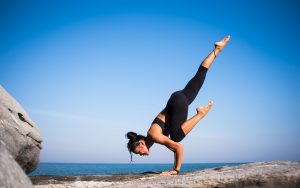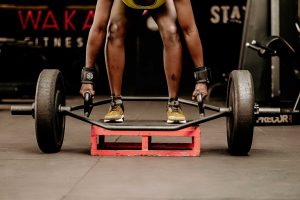In one of our recent newsletters, we briefly touched on the relationship between Chiropractic and strength. You might be asking one of the following questions:
“How can Chiropractic help my strength?”
“What’s strength got to do with it?”
“Why do I need strength?”
“I do cardio, aren’t I strong enough?”
Perfect. Today, allow me to show you 3 great reasons why strength matters. Then, in a second post, I’ll jump into explaining what Chiropractic can mean with strength as seen in the results of a few real-life studies.
Why is strength important?
Being strong has a lot more to do with your overall performance and vitality in life than first thought. It goes way beyond body image too. Your body is the ultimate All-Terrain Vehicle. It’s the number 1 way you have of experiencing this amazing world in which we live. For us to experience life to the fullest we need the strength to be able to do so.

Mums and dads need the physical (and emotional) strength to carry on with the myriad of tasks of running a household, caring for and carting kids around, work, and recreation. The athlete needs strength to maximise the benefits from their training and perform at their best and beyond. While grandparents need the superhuman strength of acting, often as a very involved, hands-on grandparent with tireless energy, who is seemingly on-call to do a lot of child rearing duties and home renovations that their kids and grandkids need, at a moment’s notice too!
As our bodies age I’m quietly confident that you’re not ready to slow down, to stop doing everything you love. With strength on your side, you don’t have to. Although this won’t focus on exactly what to do to be strong or ways to be strong, there’s plenty of personal trainers, physiotherapists, gyms and online programs out there to help you with that. Today let’s look at 3 reasons why Strength matters.
1.1. Strength prevents Cognitive Decline
Recently, one of the gurus in the longevity space, Dr Peter Attia released a newsletter on muscle mass and brain function. You can find that full newsletter here. He went into detail between the significant links between low muscle mass (Sarcopenia) and dementia in older age. Chances are, you know someone effected by dementia. It can be quite scary. According to dementia.org.au in 2022, 487, 500 Australians are living with dementia. Scarier still is that by 2058 almost 1.1 million Australians are expecting to be living with dementia.
At this stage, there’s no known cure. But there is something we can do and it seems like a good time to hit the gym. Although the exact mechanisms are somewhat unknown, a fantastic journal article was written, exploring the possible links between low skeletal muscle mass and cognitive function. There are two things however, that we do know. It might sound a bit like word salad, but skeletal muscles and the brain are both muscles. Both require work to get or stay strong. Every time you work one, you’re increasing blood flow through those working muscles. As the brain receives approximately 15% of all blood pumped out of the heart, any exercise will increase blood flow to the brain.

Secondly, muscles that are exercised are anti-inflammatory. Some of the by-products of these exercised muscles are known to reduce inflammation throughout the body. This release, is systemic. Meaning, exercise of the legs, for example, can reduce inflammation in the legs, stomach, neck and even brain. So just in those two points above, there’s a pathway for exercise to improve blood supply to the brain and reduce inflammation. Both factors will help stave off dementia.
1.2. Muscles are an organ
If you happened to check Dr Attia’s newsletter above, you might notice he extensively talks about muscles as an organ. Yes, muscles, just like the heart, lungs and kidneys are a collection of cells and structures that require energy to work towards a common purpose. This purpose is movement.
Where this gets tricky, is as we get older, it gets harder and harder to maintain a steady weight and our movement gets tougher. Metabolism seems to slow to a stand-still and although we might “feel ok” it’s easy to notice the weight starting to increase and our ability to “burn off” delicious food gets worse and worse. Some of the risks that can come with this weight increase includes Type 2 Diabetes, heart disease, stroke, cancer, arthritis and sleep apnoea just to name a few. Having a closer look at Type 2 Diabetes, in 2020 over 1.2 million Australian’s were living with this disease and this number has increased 3 x over the past 20 years.
 Here’s the win. Two of the beautiful things of muscles being an organ is their incredibly high energy demand or utilisation of fuel. Their hard work also produces a bunch of amazing by-products for the body too. You are probably aware, the number one fuel for muscles is carbohydrates or glycogen. Additionally, I’ll bet you’ve experienced that the harder a muscle works, the more fuel it requires and the more it burns through. So, if you’re looking for the most effective way for your body to process extra carbohydrate, blood sugar or glycogen stores in the body, nothing will beat exercise. Particularly, strength exercise. Most of the time, cardio exercises like swimming and walking don’t tax the muscles nearly as much as they tax the cardio system. Whereas weight training, or muscle-based resistance exercise works the muscles to a point where they burn a much larger amount of fuel and use much greater quantities of carbohydrates or blood sugar that’s within the body.
Here’s the win. Two of the beautiful things of muscles being an organ is their incredibly high energy demand or utilisation of fuel. Their hard work also produces a bunch of amazing by-products for the body too. You are probably aware, the number one fuel for muscles is carbohydrates or glycogen. Additionally, I’ll bet you’ve experienced that the harder a muscle works, the more fuel it requires and the more it burns through. So, if you’re looking for the most effective way for your body to process extra carbohydrate, blood sugar or glycogen stores in the body, nothing will beat exercise. Particularly, strength exercise. Most of the time, cardio exercises like swimming and walking don’t tax the muscles nearly as much as they tax the cardio system. Whereas weight training, or muscle-based resistance exercise works the muscles to a point where they burn a much larger amount of fuel and use much greater quantities of carbohydrates or blood sugar that’s within the body.
The second benefit of muscles as an organ is the by-products that are produced from their hard work and their burning of carbohydrates. We touched on some of these by-products above where we said they can help in reducing inflammation. But they can also help in brain development through their production of things like BDNF (Brain derived Neurotrophic factor). Finally, each bout of exercise continues to make those muscles stronger by developing more mitochondria or fuel cells within the muscles themselves.
1.3. Strength is Geri protective & joint protective
One of the biggest risks of getting older is quite literally, our body starts to break down. We slow down and can’t keep up with the pace of life we used to. Two things that scare most of us are damaging our joints and worse, becoming a falls risk.
Have a think, are there any movements that you now avoid doing because you’re worried about damaging your joints? You’ve probably either heard or thought something before like:

“I don’t do squats because of my lower back.”
“I avoid dead lifts.”
“My knees don’t like lunges.”
“I hate going down hills.”
Or, one of my personal favourites, “running is bad for your knees.”
The funny thing here is that in most cases the real risk of injury comes from not enough muscular support. As seen in the hip and knee replacement prevention program known as GLAD, significantly improving strength in the knees and hips has been shown to delay and often prevent the need for joint replacements. As a Chiropractor, I still get excited when I see people at the gym doing dead lifts. They are one of the best things for lower back strength, and believe it or not they were originally known as the “health lift.”
Falls are one of the biggest risk factors and causes of morbidity and mortality amongst the elderly. Staggeringly in 2019-20 42% of all hospitalisations were due to falls and 40% of all deaths were fall related. Additionally, a 2019 study assessed the likelihood of hospitalisations and the mortality risk associated with falls. Unfortunately, the lower the skeletal mass, the worse both the rate of hospitalisation and the associated mortality. It might sound silly, but do you have the strength to get up off the floor without pulling yourself up on furniture? What about without using your arms at all? Not only would muscles act as a bit of protection against the bony impact of a fall, but without the muscle strength, how will you get going again?
Hopefully, those 3 points above give you a great reason to look towards muscles as being more than just a vain expression of external appearance. They absolutely have their place whether it’s in improving brain function or body composition. It can also be for disease and injury prevention too. Either way, muscle strength can massively improve your health and wellbeing for today, tomorrow and the future.

